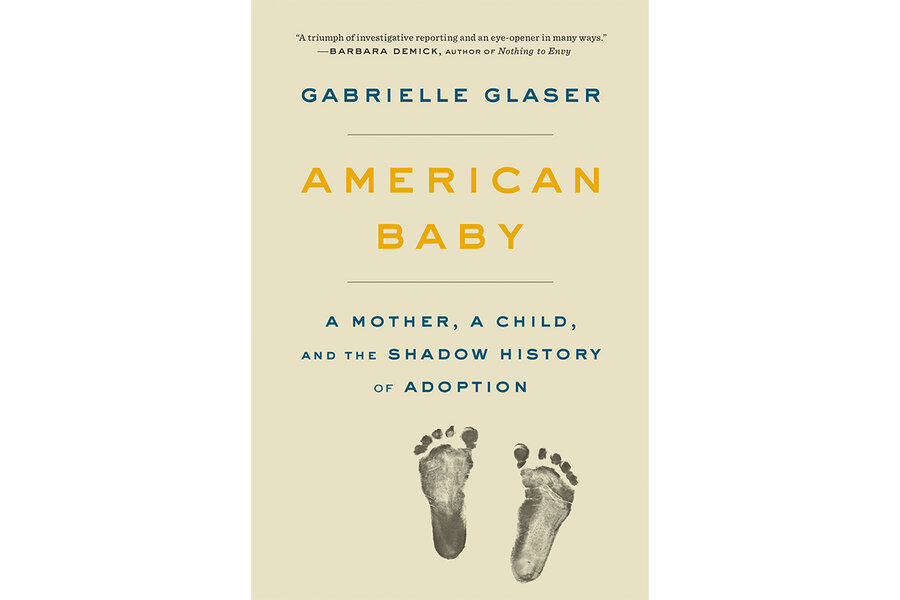‘American Baby’ focuses light on the dark history of US adoption
Loading...
When teenager Margaret Erle got pregnant, it was 1961. The baby boom was in full swing. The postwar American dream promoted in magazines and on TV featured a white, middle-class family with a husband who commuted to work from a newly developed suburb and a wife at home raising the children.
But there would be no rush to the altar in Margaret’s case: She and her boyfriend, George, were too young to marry in New York without parental consent, and both their parents disapproved. Instead, as journalist Gabrielle Glaser recounts in her riveting new book, “American Baby: A Mother, a Child, and the Shadow History of Adoption,” Margaret gave birth to a son at 17 and reluctantly gave him up for adoption.
Glaser later befriended that son, David Rosenberg, in 2007; she interviewed him for a story she was writing. Because of ongoing health problems, he’d become interested in finding his birth mother, but he wasn’t successful until several years later, when he located Margaret with the help of a home DNA testing kit.
Glaser then got to know Margaret, too, and “American Baby” alternates between Margaret’s and David’s stories, culminating in their poignant reunion, while also illuminating what Glaser calls a hidden chapter of U.S. history. Their experience, the author observes, is compelling but not unique: More than 3 million young women “conceived during the decades after World War II and found themselves funneled into an often-coercive system they could neither understand nor resist.”
Using Margaret’s painful recollections and her own thorough research, Glaser describes this system in grim detail. Margaret, the daughter of German Jewish émigrés who lived in Manhattan, was sent to Staten Island to the maternity home called Lakeview, one of more than 200 such institutions that existed at the time in the United States. Lakeview (which had neither lake nor view) was operated by the now defunct Louise Wise Services, an agency that matched the babies of unwed Jewish mothers with Jewish couples seeking to adopt.
The social stigma of unwed pregnancy was so pervasive that the young women hiding out at Lakeview awaiting childbirth were advised to go by fake names. When the obviously pregnant Lakeview residents went on rare outings into town, they donned ersatz wedding bands, but even so they were occasionally hissed at.
Louise Wise social workers visited Margaret throughout her pregnancy, pressuring her to sign adoption papers. When Margaret insisted that she and George were going to marry and raise their child themselves, she was laughed at and told that George would leave her and no other man would want her. Margaret finally caved after social workers threatened to send her to juvenile detention, citing vague offenses that fell under wayward minor codes.
Once Margaret signed the papers, her son’s original birth certificate was sealed. The infant, whom she and George naively believed they could still get back, would be “erased from public records as thoroughly as if he had vanished into witness protection,” Glaser writes. “He was to join millions of other babies adopted at this time, for in the United States, this systemic secrecy was near universal.”
Everyone from her doctor to the Lakeview staff to the social workers advised Margaret to “forget this ever happened.” She and George went on to marry and have three more children, but of course she never forgot.
The emotional heft of “American Baby” comes from Margaret’s wrenching story, which Glaser tells with compassion. The author also does an excellent job charting the social forces that collided to shape her experience. In the postwar period, premarital sex was on the rise, but birth control was still hard to obtain. Abortion was illegal, and single motherhood and illegitimacy were pathologized. At the same time, given that domesticity was venerated, infertile married women could feel almost as much shame as women who became pregnant out of wedlock. At a time before advanced fertility treatments were available, demand for babies was high, and adoption agencies, some of which engaged in coercive and deceptive practices, sprang up to meet it, along with a black market in adoptions.
Much has changed in recent decades. Open adoption, in which birth parents and adoptive parents have information about and in some cases contact with each other, is now the norm. In addition, due to the work of adoption rights activists, more states are granting adopted adults access to their original birth certificates; New York became the 10th state to do so last year. Opponents of such legislation argue that it violates birth mothers’ right to privacy. The issue is fraught. But at the end of this indelible narrative, Glaser makes her own position clear: “If there is a basic human right to know your parents or the fates of your sons and daughters, then a significant number of our fellow citizens have been deprived of something as fundamental as life, liberty, and the pursuit of happiness.”








